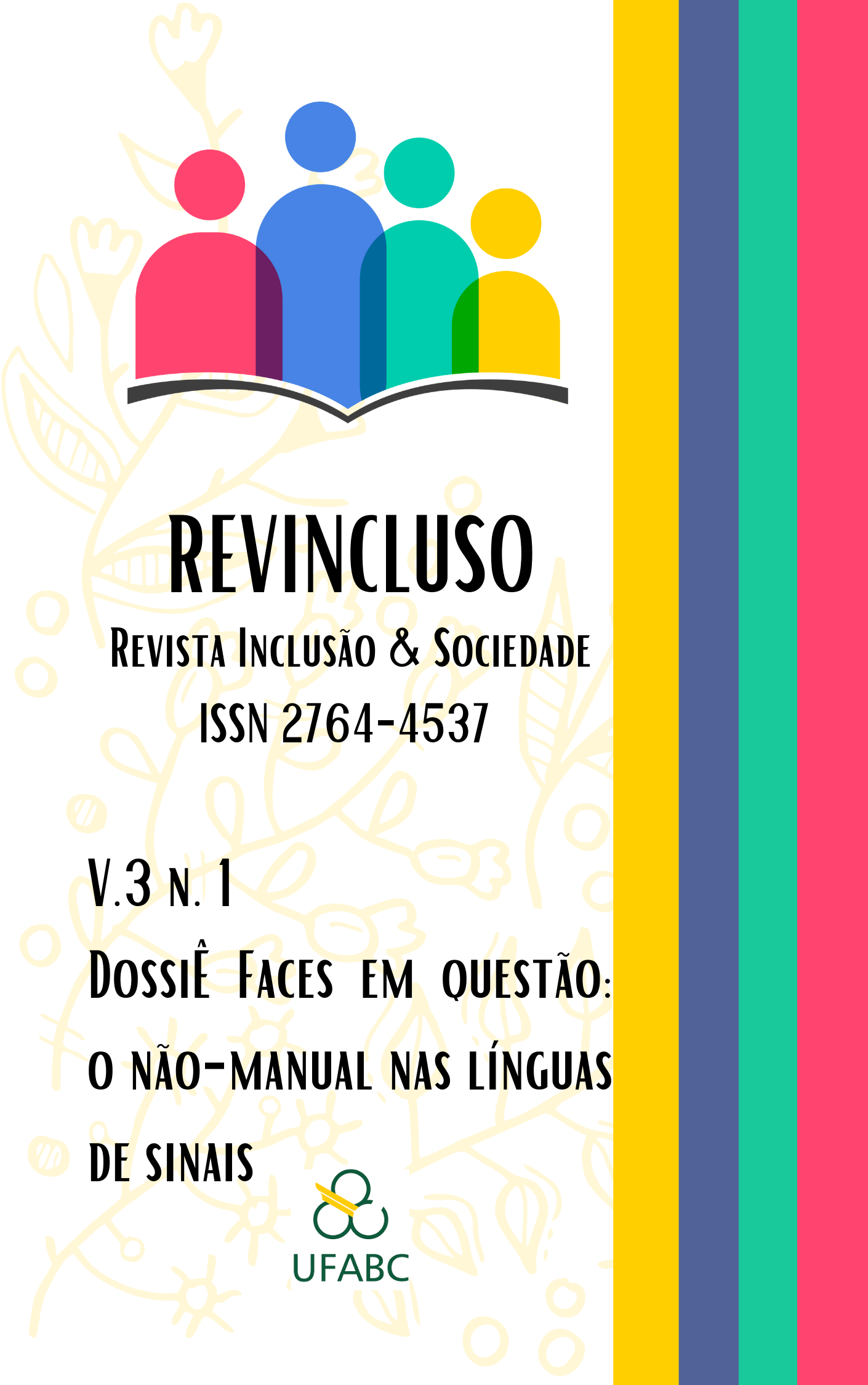Some notes on Non-Manual Markers in Portuguese Sign Language
DOI:
https://doi.org/10.36942/revincluso.v3i1.901Keywords:
Portuguese Sign Language, Non-Manual Markers, CheremAbstract
Portuguese Sign Language (LGP/LSP) is the main language used daily by the portuguese deaf community. This language was first taught around 1823 by Pär Aron Borg, a Swedish teacher. Since then, a long path has been taken: there are laws on deaf education; schools for the deaf and we are having a growing number of deaf academics. However, research on Portuguese Sign Language per se is still scarce when comparing with other countries. Something has been done and it still being done, so it is crucial that research proceeds since there are many fields to explore. In this paper we intend to briefly describe LGP/LSP and focus our attention on Non-Manual Markers (NMM) with some detail. Thus, we will describe it while suprasegmental particle, mouthing and mouth gestures, facial/emotional expression, and gesture as a non-manual’s root. For this, we aim to analyse some of those features as an example of cultural and cross-linguistic phenomena.
Downloads
Downloads
Published
How to Cite
Issue
Section
License
Copyright (c) 2023 Isabel Correia, Rafaela Cota Silva

This work is licensed under a Creative Commons Attribution 4.0 International License.
Todos os artigos desta revista obedecem à licença Creative Commons - Attribution 4.0 International (CC BY 4.0).



